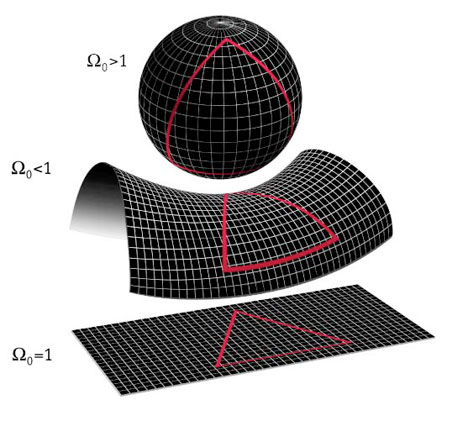Sep
30
2010

Cooking as Eschatology
But while they still did not believe for joy, and marveled, He said to them, “Have you any food here?” So they gave Him a piece of a broiled fish and some honeycomb. And He took it and ate in their presence.
NOTE: THIS POST HAS BEEN REMIXED AND INCLUDED IN GOD’S KITCHEN.
Thanks to Doug Wilson’s recommendations of it, one of the books I took to hospital was The Supper of the Lamb by Robert Farrar Capon. It is a mouth-watering fusion of cookbook and theology, pushing the idea of multi-disciplinary insights to the outer limit. But then, we moderns don’t have such biblical horizons, do we? We refuse to see the world as the Bible reveals it to us.
Continue reading
1 comment | tags: Daniel, Doug Wilson, Esther, Food laws, James Jordan, Leviticus, Noah, Robert Farrar Capon | posted in Apologetics, Bible Matrix, Biblical Theology, Christian Life, Creation, Quotes, The Restoration Era, Totus Christus
Sep
28
2010
or The Universe is Flat
 The three density ratios (Ω omega) and the corresponding cosmological morphology. (Goddard Space Flight Center WMAP Cosmology)
The three density ratios (Ω omega) and the corresponding cosmological morphology. (Goddard Space Flight Center WMAP Cosmology)
Therefore, brethren, having boldness to enter the Holiest by the blood of Jesus, by a new and living way which He consecrated for us, through the veil, that is, His flesh, and having a High Priest over the house of God, let us draw near with a true heart in full assurance of faith, having our hearts sprinkled from an evil conscience and our bodies washed with pure water. (Hebrews 10:19-22)
The “firmament” is the most troublesome element of the Creation week. Even when we understand its symbolic counterpart in the Tabernacle (the veil), how do we account for its description as a physical part of the world?
On Day 4, God created the governing lights and put them in the firmament. If this refers to some sort of “water canopy” that later came crashing down in the Great Flood, the language referring to it as a home for stars is then visual. The Adam-to-Noah pattern puts the floodgates of heaven at “Atonement,” which means the opening of this original “proto-veil” brought men face-to-face with the Ark/throne of God and washed away the sin of the world, quite literally. All flesh was cut off. All sin was covered. And it was the end of that Covenant. The sky was rolled up like a scroll. In Noah, God founded a new heavens and a new (mediatory) Altar-Land. Symbolically, the old sun, moon and stars came crashing down. They were the “mighty men” of Genesis 6. Symbolically, God put new rulers in the firmament: a body of men and animals in a covered vessel.
But, of course, the actual governing lights remained. So, there remains something beyond this original watery “sea.” The word translated “firmament” means something flat, beaten out like metal. It is architectural. Cosmologists now tell us that the universe may well be both spherical, hyperbolic and/or “flat,” a bit like the surface of the earth, I guess. [1] God speaks of the mediatory Land as flat because it is an Altar. [2] Space is a veil between men and the throne of God. Filled with lights, it pictures for us the Holy Place before God’s throne, which is populated with angels and the redeemed. This cosmic hall of government resembled a crystal sea.
But there is something strange about the account of the creation of this veil, this dark garment stretched out on Day 2. Like the “waters above” of the original Covenant, space itself has a built-in obsolescence.
Continue reading
6 comments | tags: Abraham, Creation Week, Genesis, Pentecost, The flood | posted in Against Hyperpreterism, Bible Matrix, Biblical Theology, Creation, The Restoration Era
Sep
3
2010
or Insanity and Spiritual Songs

Van Gogh’s work has been regarded by some as “hallucinatory,” however his letters show that few artists were as intelligent and rational. His work was not the product of his dark times but of his struggle against them.
“I am feeling well just now… I am not strictly speaking mad, for my mind is absolutely normal in the intervals, and even more so than before. But during the attacks it is terrible—and then I lose consciousness of everything. But that spurs me on to work and to seriousness, as a miner who is always in danger and makes haste in what he does.” [1]
Continue reading
Comments Off | tags: Covenant Theology, Evolution, Hebrews, Jeremiah, John Piper, Martyrdom, Mission, Noah, Paul, Persecution, Poetry, Psalms, Ray Sutton, Van Gogh, Vindication | posted in Bible Matrix, Biblical Theology, Christian Life, Creation, Quotes
Sep
1
2010

From James B. Jordan’s Trees and Thorns: [1]
The water in the ground of the garden is associated with Eve.
What Adam was to guard was the Garden, and preeminently Eve, its mistress. This is precisely what he refused to do. Later in the Bible, new Adams meet their Eves at wells, and defend them there. Eliezar met Rebekah at a well, and brought her home to Isaac (Gen. 24:11ff.). Jacob met Rachel at a well, and unsealed it for her — a sign as it turned out of his coming marriage to her (Gen. 29:10-11). Good Shepherd Moses met Zipporah at a well and defended her against bad shepherds (Ex. 2:16-19).
Continue reading
Comments Off | tags: Greater Eve, James Jordan, Marriage | posted in Biblical Theology, Creation, Quotes
Aug
31
2010

From James B. Jordan’s Trees and Thorns: [1]
The land and garden of Eden were watered by a spring. Why call attention to the fact that God did not send rain? Why not just mention the spring and leave off the statement about rain? The reason, I believe, is to call our minds back to Genesis 1:2-9. We find in Genesis 1:2 that there was an ocean over the original earth. Then God created the firmament, and separated the waters above from the waters below. On the third day God gathered the waters below into areas below the surface of the land.
Now we have a clear distinction between waters above the firmament, the source of rain, and waters below, which would have to come up from under the earth. Both Genesis 1:2-9 and 2:5-6 set up the distinction eschatologically; ground water comes first, and then heavenly water.
Continue reading
Comments Off | tags: Egypt, Genesis, James Jordan, Moses, Sodom | posted in Biblical Theology, Creation, Quotes
Aug
30
2010
or Who Is My Neighbour?

The content of this post has been revised and included in Bible Matrix II: The Covenant Key.
1 comment | tags: Feasts, Literary Structure, Luke, Tabernacles | posted in Bible Matrix, Christian Life, Creation, Ethics
Aug
17
2010

Here’s my go at the structure of the first of these seven praise psalms. (The introduction is here.) Apparently, it has five verses, following the Covenant structure. Within this, each stanza also has five lines, which echo the same structure while maintaining the theme of the stanza. The only exception is verse 4 which concerns the Sanctions. It has seven lines. As I maintain, the 5-point Covenant model expands into the 7-point matrix as Ethics gets split into three: Law opened/Death under the Law/Resurrection fulfilling the Law. 5-point Word creates 7-point History. The Sanctions correspond to the Day of Atonement (Conquest) which has the theme of the resurrected body ascending to govern under God. On that Day, every year, Israel died and rose again.
Comments Off | tags: Psalms | posted in Bible Matrix, Biblical Theology, Creation
Aug
12
2010

Does the Bible really contain everything the man of God requires? The curve balls of history call the church to greater and greater wisdom, but the principles remain the same. What if one of the oddest books of the Old Testament contained crucial advice for modern western culture and the Christians attempting to deal with its tragi-comic apostasy? Continue reading
1 comment | tags: Economics, Evolution, James Jordan, Judges, Worship | posted in Biblical Theology, Creation, Quotes
Aug
3
2010

A lot of very smart Christians believe that the Creation account was written as a foil for Ancient Near Eastern creation myths. It was written by Moses to rally Israel culturally, to set a boundary between the Hebrew identity and that of the nations.
Continue reading
Comments Off | tags: Genesis, James Jordan, Literary Structure | posted in Bible Matrix, Biblical Theology, Creation, Quotes
Jul
30
2010

Art is man’s interpretation of the world, but the world itself is the original art. Everything is physical, literal, historical, but everything is also symbol. This is not an interpretation imposed upon what we observe. The Creation was actually made as symbol. Without the Word of God, we are rendered unable to interpret it. [1]
The meaning of the sun, moon and stars in Genesis 1 is not simply a poetic idea. The purpose of the heavenly lights is actual and practical. Moreover, it will be measured out in human flesh over and again throughout history.
Continue reading
Comments Off | tags: Abel, Animism, Cain, Creation Week, Genesis, Literary Structure, Marilynne Robinson | posted in Biblical Theology, Creation, Quotes



































